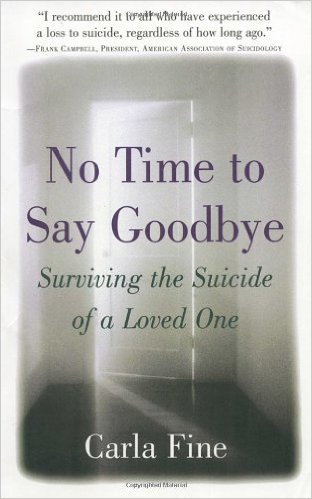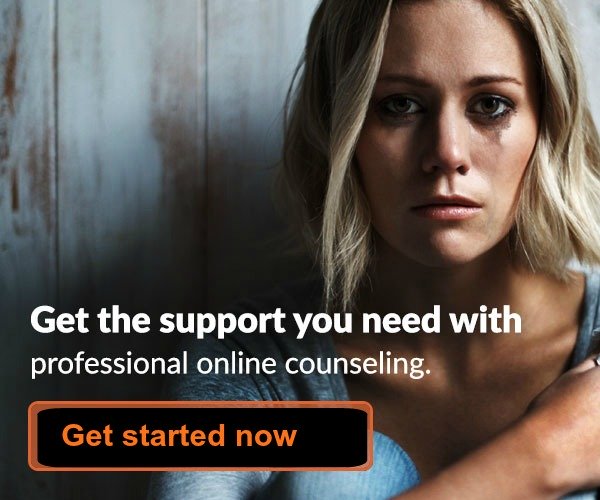Facts about Teen Suicide, Cyber Bullying and Where to Get Help
This article about Teen Suicide Facts and Statistics, by Cheryl Ronzoni from the American Foundation for Suicide Prevention also includes a list of essential resources, helplines and support.
Teen suicide has received extensive media coverage over the past decade. Several high-profile deaths of young people, including Phoebe Prince and Tyler Clementi, have been widely reported, discussed and written about.
Suicide and mental illness were once taboo subjects but are now the focus of increasingly open and candid dialogue. Despite this, however, the families who have lost young people to suicide suffer overwhelming grief, survivor guilt and shock. They are often left with unanswered questions as to why.

Teen Suicide Statistics
According to the Centers for Disease Control (C.D.C.) in the United States, suicide is the third leading cause of death of people ages 15 through 24, behind accidents and homicide. Suicide is the fourth leading cause of death for children ages 10 and 14. The C.D.C. states that each year, 4,600 youth between 10 and 24 die by suicide. In terms of gender, boys are more likely than girls to die by suicide - 81% for boys and 19% for girls.
In contrast to this sobering statistic however, girls are more likely to attempt taking their own lives. Culturally, Native American/Alaskan Native youth have the highest rate of suicide-related fatalities in the U.S. The C.D.C. reports that in a nationwide youth survey, Hispanic teens were more likely to report having attempted suicide over their white, black and non-Hispanic classmates.
Despite the grim statistics of youth who take their own lives, more young people survive suicide attempts than actually die. In the nationwide survey, 16% of children in grades 9-12 reported seriously considering suicide while 13% reported creating a plan and 8% made an actual attempt to take their life. The C.D.C. notes that each year emergency departments across the United States see 157,000 self-inflicted injuries of youth between the ages of 10 and 24.
Bullying, Cyberbullying and Suicide
Bullying is recognized as a major public health problem in the Western world, according to the Psychiatric Times. A modern form of bullying is cyberbullying, which is bullying through the use of technology and social media. Cyberbullying has become an alarming concern for teens and parents in light of recent incidents associated with youth suicides reported in the mass media. The bullying of youth and its devastating consequences have become a priority for parents, school officials as well as medical and social services communities.
The Times notes that depression, suicidal ideation and suicide attempts are associated with bullying behavior. Victims consistently demonstrate more symptoms of depression than those who are not bullied. Victims of such behavior are not alone in exhibiting increased incidents of depression and suicidal ideation, however; studies of middle and high school students show an elevated risk of suicidal behavior among bullies as well as their victims. Girls who were victims of bullying at any frequency have an increased risk of depression, suicidal ideation and attempts. Boys, however, suffer increased risk of depression and suicidal ideation when bullying is frequent.
The C.D.C. acknowledges that it is not known if bullying is a direct cause of suicidal behavior, as most young people who are victims do not engage in suicide-related actions. The organization notes that bullying in conjunction with other risk factors increases the likelihood a young victim will engage in suicidal behavior. Circumstances that may be contributing factors of the behavior include emotional distress, exposure to violence, family conflict, relationship problems, lack of connection to school environment, alcohol and drug use, physical/learning disabilities and lack of access to helpful resources and support.

Facts about Teen Suicide - Support
If a teen receives adequate support from family and positive school
connections, the risk for suicidal behavior might be reduced, even if
bullying is still taking place.
In an effort to combat bullying
behavior, schools that foster a positive environment of support and
connectedness will better address bullying issues among its students. At
home, parents should have an open communication policy, minimize family
stress and become aware of and familiar with a child's online
activities.
There are numerous resources online and in communities for teens if they are struggling with depression and/or suicidal ideation. Parents who are concerned about their child should reach out and find support for their teen as well as for themselves.
For Teens – Suicide Helpline Chat
The Crisis Text Line provides free emotional support and information to teens in any type of crisis, including feeling suicidal. Teens can text with a trained specialist 24 hours a day. Text “CTL” or “LISTEN” to 741-741. www.crisistextline.org
Reachout provides information written by teens themselves. Immediate support from peers is available. www.reachout.com
The Society for the Prevention of Teen Suicide - information to help those who may be having suicidal thoughts. This site also includes information on how to cope if a friend dies by suicide and a section for parents. www.sptsusa.org/teens
Suicide Hotline Chat
The Trevor Project provides suicide prevention services to homosexual, bisexual, and transgender young people aged 13–24. It has information about the signs of suicide and a way to connect online with other LGBTQ youth. The Trevor Helpline is a 24-hour toll-free suicide hotline at 1-866-488-7386. TrevorChat is for online crisis chat 6 hours a day at www.thetrevorproject.org/chat. Trevor Text is for texting on Fridays late afternoon to early evening. Text “Trevor” to 202-304-1200.
For Parents and School Personnel
The National Association of School Psychologists offers helpful suicide prevention tips for parents and educators on their website. www.nasponline.org
Helpguide is a nonprofit website that offers a wealth of detailed information about teen depression. www.helpguide.org
Stop Bullying is a website of the U.S. federal government and offers comprehensive information about bullying and cyberbullying. www.stopbullying.gov
Teen Drug Abuse - information about how substance abuse can affect teenagers. https://www.innerbody.com/addiction-in-teenagers
List Of Teen Alcohol And Drug Rehab Centers Near You - All Treatment
Parents Who Have Lost a Child To Suicide
The Compassionate Friends is an international organization with chapters as well as an online presence. The focus of the organization is to provide highly personal comfort, hope and support to every family experiencing the death of a son or a daughter, a brother or a sister or a grandchild, and helps others better assist the grieving family. The website features a specific page for parents who have lost a child to suicide. www.compassionatefriends.org
Child Suicide is an online resource for parents grieving a suicide loss as well as information for teens suffering from depression. www.childsuicide.org
The American Foundation for Suicide Prevention has 75 chapters across the United States and offers a comprehensive list of bereavement support groups across the country. The organization also hosts International Survivors of Suicide Day the Saturday before Thanksgiving. To find a support group or a location for Survivors Day, visit www.afsp.org
Miscellaneous Suicide Resources
The International Association for Suicide Prevention provides international information and crisis centers across the globe. They are a partner with the World Health Organization. www.iasp.info
To read the Centers for Disease Control report "The Relationship of Bullying and Suicide: What We Know and What it Means for Schools" Visit the link www.cdc.gov
The National Alliance on Mental Illness (NAMI) offers extensive information on teen suicide and provides links to additional suicide prevention resources. www.nami.org
Information on the connection between Substance Abuse and Suicide from DrugsRehab.com
Cheryl Ronzoni sits on the Springfield Walk Committee for the Western MA Chapter of the American Foundation for Suicide Prevention.
Read more on Coping with Suicide on this site
Recommended Read:
No Time to Say Goodbye by Carla Fine
- Grief and Sympathy Home
- Coping with Suicide
- Facts About Teen Suicide
Where to get help:
Have You Considered One-on-One Online Grief Counseling?
Get Expert and Effective Help in the Comfort of Your Own Home
The following information about online counseling is sponsored by 'Betterhelp' but all the opinions are our own. To be upfront, we do receive a commission when you sign up with 'Betterhelp', but we have total faith in their expertise and would never recommend something we didn't completely approve.
Do you feel alone and sad with no support and no idea how to move forward? It can be tough when you are stuck in grief to find the motivation to get the most out of your precious life.
Online counseling can help by giving you that support so you don't feel so alone. You can have someone to talk to anytime you like, a kind and understanding person who will help you to find meaning in life again, to treasure the memories of your loved one without being overwhelmed and to enjoy your activities, family and friends again.
- Simply fill out the online questionnaire and you will be assigned the expert grief counselor most suitable for you. It only takes a few minutes and you don't even have to use your name.
- Pay an affordable FLAT FEE FOR UNLIMITED SESSIONS.
- Contact your counselor whenever you like by chat, messaging, video or phone.
- You can change counselor at any time if you wish.
- Click here to find out more and get started immediately.
- Or read more about how online counseling works here.
Sales from our pages result in a small commission to us which helps us to continue our work supporting the grieving.
Hypnosis for Grief - 10 Ways It Can Help You
Try a gentle hypnotherapy track to relax the mind. Learn how self-hypnosis can help you cope with grief at any time of the day or night.

For Remembrance:
Sales from our pages result in a small commission to us which helps us to continue our work supporting the grieving.
Memorial Jewelry to Honour a Loved One
Check out our lovely range of memorial jewelry for any lost loved one. Pendants, necklaces, rings or bracelets, we have them all in all kinds of styles. Choose for yourself or buy as a sympathy gift.
Create an Online Memorial Website
Honour your loved one with their own memorial website. Share photos, videos, memories and more with your family and friends in a permanent online website. Free for basic plan with no ads.









